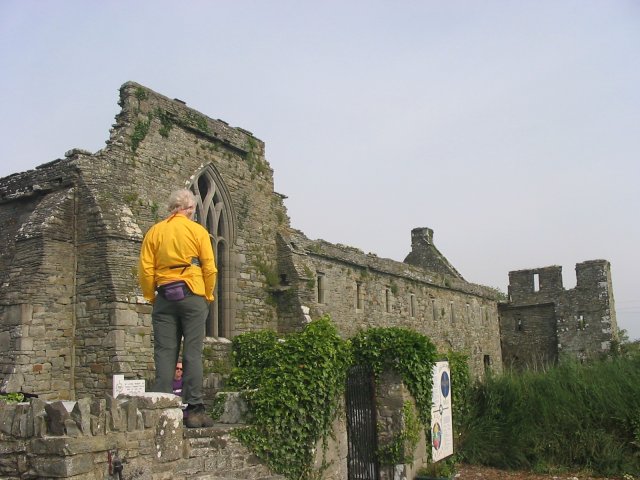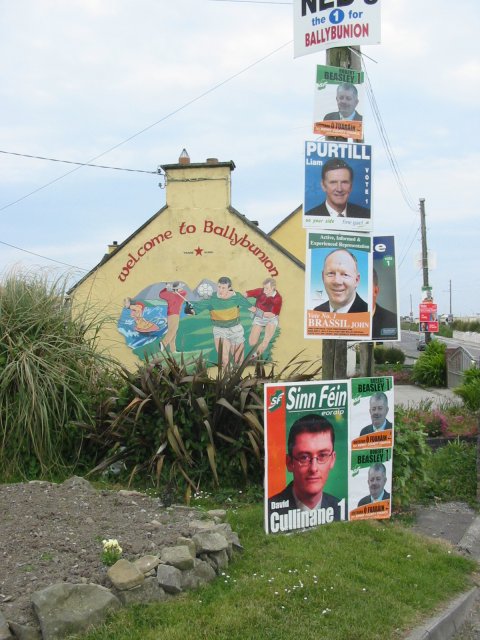 |
8. A lot of bally places |
|||
|
We left Tarbert by the quiet coastal route to Ballylongford stopping on the way at Lisloughtin Friary. This is O'Connor country. Two ruined monuments to the family's power remain in the area: Carrigafoyle Castle and Lislaughtin Friary. Both were destroyed by English forces in 1580.
'In 1477 John O'Conor requested permission from Pope Sixtus IV to found this Franciscan Friary in his demesne. A community of friars remained at Lislaughtin until 1580 when, following the murder of three friars and the destruction of the buildings, the friary was abandoned. The buildings were used intermittently until 1629. The remains here consist of the church, cloister, and fragments of domestic buildings. ... The original gateway to the friary is intact.' The ground within and about the ruins is closely packed with graves, including many which from recent decades.
We set off from Ballylongford by the R551 Ballybunion road, but turned off after a mile or so on a long, straight, minor road that climbed the eastern slopes of Knockanore Mountain (despite its impressive name, it's only 267m high, but it does stand out in the otherwise flat landscape). With a right and a left at Lyre (farm), we were on a road heading west to meet the R553 a mile from the centre of Ballybunion, where we found the 'Welcome to ...' gable-end and a pole-ful of election posters.
And Ballyduff and Ballyheige were still to come before the end of the day.
 |
Standing on the stile at Lislaughtin Friary. |
 |
 |
8. A lot of bally places |
|||
|



